What is Artificial Intelligence? Definitions, History, and Key Concepts

#Artificial_Intelligence (artificial intelligence) is a branch of computer science that deals with building machines that can perform tasks that usually require human intelligence.
These tasks include learning, problem-solving, pattern recognition, natural language understanding, and decision-making.
Artificial Intelligence is actually an attempt to simulate human thought processes in machines.
The history of artificial intelligence dates back to the 1950s and has seen significant progress since then.
Key concepts in artificial intelligence include machine learning, neural networks, natural language processing, and computer vision.
Machine learning enables machines to learn from data without explicit programming.
Neural networks are modeled after the human brain and are used to solve complex problems.
Natural language processing enables machines to understand and produce human language.
Computer vision enables machines to see and understand images.
Artificial intelligence is divided into two main categories: Narrow AI and General AI.
Narrow AI is designed to perform a specific task, while General AI is capable of performing any task that a human can.
Currently, most existing AI systems are of the Narrow AI type.
Does your current website create the trust that potential customers should have in your business? If the answer is no, it’s time to have a professional and impactful corporate website with Rasaweb.
✅ Completely custom design tailored to your brand identity
✅ Increased lead attraction and business credibility in the eyes of customers⚡ Contact us for a free consultation!
Applications of Artificial Intelligence in Various Industries
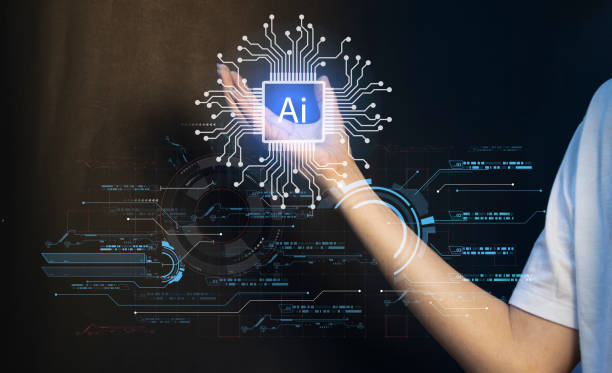
Artificial intelligence has extensive applications in various industries.
In the #healthcare industry, artificial intelligence is used for disease diagnosis, drug development, and providing personalized care.
In the #automotive industry, artificial intelligence is used for the development of self-driving cars and driver assistance systems.
In the #finance industry, artificial intelligence is used for fraud detection, risk management, and providing customer service.
In the #manufacturing industry, artificial intelligence is used to improve productivity, reduce costs, and increase product quality.
In the #education industry, artificial intelligence is used to provide personalized training and assess student knowledge.
These applications are just examples of the vast potential of artificial intelligence in reshaping various industries.
The use of artificial intelligence in the #transportation industry is also increasing.
Intelligent traffic systems, route optimization, and accident reduction are among the applications of artificial intelligence in this field.
Also, artificial intelligence is used in #agriculture to improve productivity and manage water resources.
Machine Learning and its Types of Algorithms

Machine learning is one of the main sub-branches of artificial intelligence that enables machines to learn from data without explicit programming.
Machine learning algorithms allow machines to identify patterns in data and use these patterns for prediction or decision-making.
There are different types of machine learning algorithms, each of which is suitable for solving specific problems.
Supervised Learning is one of the main types of machine learning in which the machine is trained using labeled data.
In this type of learning, the machine learns to associate between inputs and desired outputs.
Unsupervised Learning is another type of machine learning in which the machine is trained using unlabeled data.
In this type of learning, the machine tries to identify hidden patterns and structures in the data.
Reinforcement Learning is another type of machine learning in which the machine learns how to maximize a specific goal by interacting with an environment.
In this type of learning, the machine learns which actions to take by receiving rewards or penalties.
Choosing the right algorithm for a particular problem depends on the type of data, the purpose of the problem, and the available resources.
Below is a table of types of machine learning algorithms and their applications:
| Algorithm | Type of Learning | Applications |
|---|---|---|
| Linear Regression | Supervised | Price Prediction, Trend Analysis |
| Logistic Regression | Supervised | Classifying Emails (Spam/Not Spam) |
| Support Vector Machine | Supervised | Face Recognition, Image Classification |
| K-means Clustering | Unsupervised | Customer Segmentation, Market Analysis |
| Neural Networks | Supervised/Unsupervised | Image Recognition, Natural Language Processing |
Neural Networks and Deep Learning

Neural networks are modeled after the human brain and are used to solve complex problems.
These networks consist of multiple layers of nodes (neurons) that are interconnected.
Deep learning is a type of neural network that uses many layers and is capable of learning complex patterns in data.
Deep learning has extensive applications in various fields such as image recognition, natural language processing, and robotics.
Deep learning enables machines to solve complex problems that were previously impossible for machines.
One of the most important advantages of deep learning is that it can automatically learn features related to a problem from data.
This reduces the need for manual feature engineering.
Complex and heavy neural networks require stronger computing resources.
One of the main challenges in using neural networks is the need for a large amount of data for training.
Also, interpreting and understanding the performance of neural networks can be difficult.
Does your current website convert visitors into customers or drive them away? Solve this problem forever with professional corporate website design by Rasaweb!
✅ Creating a powerful brand and credibility
✅ Attracting target customers and increasing sales
⚡ Get a free consultation now!
Natural Language Processing NLP Understanding and Generating Human Language by Machine
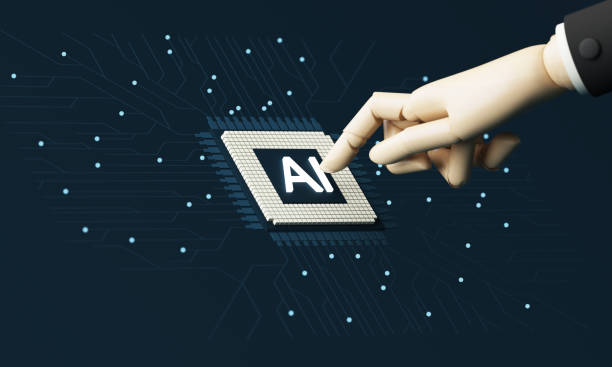
Natural Language Processing (NLP) is a branch of artificial intelligence that enables machines to understand and produce human language.
NLP has applications in various fields such as machine translation, text summarization, sentiment analysis, and answering questions.
NLP uses various algorithms to analyze the structure and meaning of language.
Natural Language Processing enables machines to communicate with humans in natural language.
One of the main challenges in NLP is the complexity and ambiguity of human language.
Human language is full of idioms, metaphors, and ambiguities that are difficult for machines to understand.
However, recent advances in NLP have enabled machines to understand and produce human language more accurately.
NLP is used in many programs and systems today.
For example, NLP is used in machine translation systems like Google Translate to translate text from one language to another.
Also, NLP is used in question answering systems like Siri and Alexa to answer user questions.
NLP has been able to provide many features for users using various techniques.
Computer Vision Identification and Interpretation of Images by Computer

Computer vision is another branch of artificial intelligence that enables machines to see and understand images.
Computer vision has applications in various fields such as face recognition, object recognition, pattern recognition, and medical image analysis.
Computer vision uses various algorithms to process and analyze images.
Computer Vision enables machines to understand the world through images.
One of the main challenges in computer vision is the diversity and complexity of images.
Images can be taken in different lighting conditions, angles, and sizes.
However, recent advances in computer vision have enabled machines to recognize images more accurately.
Computer Vision is used in many programs and systems today.
For example, computer vision is used in face recognition systems to identify people in images and videos.
Also, computer vision is used in self-driving systems to detect obstacles and traffic signs.
Computer vision has been able to provide many features for users using various techniques.
Robotics and Artificial Intelligence Integration and Collaboration of Humans and Machines
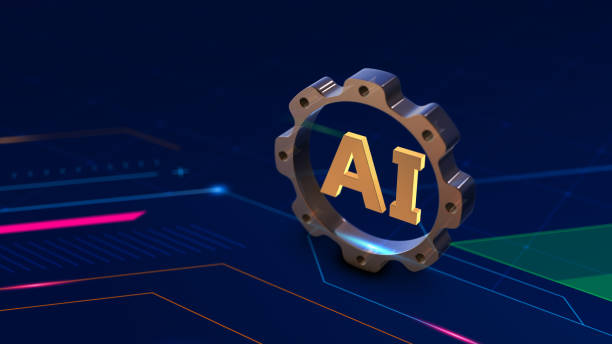
Robotics and artificial intelligence are two related fields that, by integrating them, can build machines that are capable of performing complex and automated tasks.
Robots using artificial intelligence can understand their environment, make decisions, and take appropriate actions.
The integration of robotics and artificial intelligence has enabled robots to assist humans in various fields such as industry, healthcare, agriculture, and services.
Industrial robots using artificial intelligence can perform repetitive and dangerous tasks with greater accuracy and speed.
Surgical robots using artificial intelligence can perform complex surgeries with greater precision.
Farmer robots using artificial intelligence can harvest agricultural products more efficiently.
This collaboration between humans and machines helps improve the quality of life and increase productivity.
Below is a table of applications of robotics and artificial intelligence in various industries:
| Industry | Application | Description |
|---|---|---|
| Industry | Production Line Automation | Using robots to perform repetitive and dangerous tasks |
| Healthcare | Robotic Surgery | Using robots to perform complex surgeries with greater precision |
| Agriculture | Harvesting Products | Using robots to harvest agricultural products more efficiently |
| Services | Customer Service | Using robots to answer customer questions and provide services |
Challenges and Limitations of Artificial Intelligence
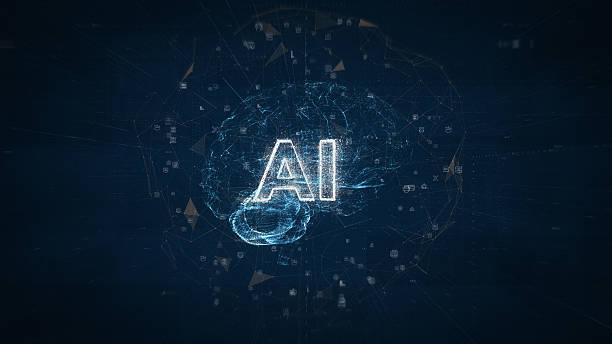
Despite the vast potential of artificial intelligence, it also faces challenges and limitations.
One of the main challenges is the need for a large amount of data to train artificial intelligence models.
Also, interpreting and understanding the performance of artificial intelligence models can be difficult.
Artificial intelligence may cause concerns about job losses.
Another challenge of artificial intelligence is ethical and legal issues.
The use of artificial intelligence in important decision-making can lead to discrimination and inequality.
Also, accountability for decisions made by machines is one of the fundamental challenges.
Maintaining privacy and data security is also among the important challenges in using artificial intelligence.
Despite these challenges, efforts to overcome these limitations and use artificial intelligence responsibly continue.
Developing new algorithms, improving model interpretation methods, and enacting appropriate laws and regulations can help reduce these challenges.
Artificial intelligence will play a more important role in human life in the future.
Tired of your online store not generating as much revenue as it could? Rasaweb, a specialist in professional online store design, solves this problem forever!
✅ Increase sales and revenue
✅ High loading speed and unparalleled user experience
⚡ Get a free online store design consultation
The Future of Artificial Intelligence Opportunities and Threats
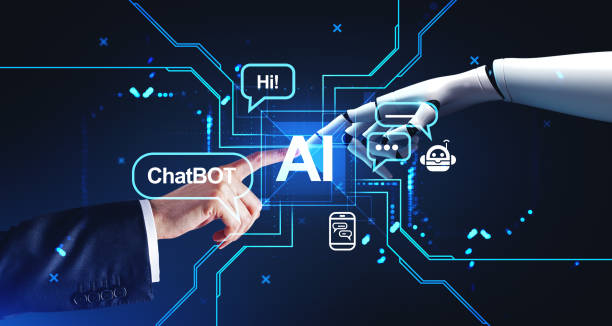
The future of artificial intelligence is full of opportunities and threats.
On the one hand, artificial intelligence can help solve complex problems, improve the quality of life, and increase productivity.
On the other hand, artificial intelligence can cause concerns about job losses, discrimination, and inequality.
Artificial intelligence can help develop new technologies and innovations.
One of the main opportunities of artificial intelligence is improving healthcare.
Artificial intelligence can help diagnose diseases, develop drugs, and provide personalized care.
Also, artificial intelligence can help improve education, transportation, and manufacturing.
Artificial intelligence can create new opportunities in various industries.
However, improper and reckless use of artificial intelligence can lead to negative consequences.
Job losses, increased discrimination and inequality, and reduced privacy are among the potential threats.
Therefore, it is necessary to use artificial intelligence with care and responsibility.
Enacting appropriate laws and regulations, educating and raising public awareness, and developing ethical algorithms can help reduce these threats.
How to Learn and Enter the World of Artificial Intelligence

Learning and entering the world of artificial intelligence requires having specific knowledge and skills.
To start, it is necessary to be familiar with the basic concepts of artificial intelligence, machine learning, neural networks, and natural language processing.
Various educational resources such as online courses, books, and scientific articles are available to learn these concepts.
Artificial intelligence has now become one of the most popular fields of technology.
After becoming familiar with the basic concepts, it is necessary to strengthen your programming skills.
Programming languages such as Python and R are widely used for developing artificial intelligence applications.
Also, familiarity with libraries such as TensorFlow and PyTorch is necessary for implementing machine learning models.
To gain practical experience, you can participate in small artificial intelligence projects or develop your own personal projects.
Also, participating in artificial intelligence competitions and collaborating with experts in this field can help you learn and progress.
With effort and perseverance, you can become an artificial intelligence expert and work in this thriving field. Artificial intelligence helps improve human lives.
Frequently Asked Questions
| Question | Answer |
|---|---|
| 1. What is Artificial Intelligence (AI)? | It is a branch of computer science that aims to create machines capable of simulating human intelligence and performing tasks that require human thinking, such as learning, problem-solving, and decision-making. |
| 2. What are the main types of Artificial Intelligence? | It can be classified into Narrow AI (which focuses on a specific task), General AI (which possesses comprehensive human abilities), and Super AI (which surpasses human intelligence). |
| 3. Mention some common applications of Artificial Intelligence in our daily lives. | These include voice assistants (such as Siri and Alexa), recommendation systems (such as Netflix and Amazon), self-driving cars, facial recognition systems, and spam filters. |
| 4. What is the difference between Artificial Intelligence and Machine Learning? | Artificial Intelligence is the broader concept of creating intelligent machines, while Machine Learning is a subset of Artificial Intelligence that focuses on enabling systems to learn from data without explicit programming. |
| 5. What is Deep Learning? | It is a subset of Machine Learning that uses artificial neural networks with multiple layers (deep neural networks) to process data and discover complex patterns, and is used in image and speech recognition. |
| 6. What are the most prominent benefits of Artificial Intelligence? | Improving efficiency and productivity, automating repetitive tasks, making better decisions based on big data analysis, and developing solutions for complex problems in fields such as medicine and science. |
| 7. What are the main challenges facing the development and deployment of Artificial Intelligence? | These include the need for vast amounts of high-quality data, privacy and security issues, bias in data and algorithms, and high development and maintenance costs. |
| 8. Does Artificial Intelligence raise ethical or social concerns? | Yes, it raises concerns related to privacy, algorithmic bias, job losses due to automation, responsibility for errors made by intelligent systems, and the need for a regulatory framework. |
| 9. How can Artificial Intelligence affect the future of the labor market? | It can lead to the automation of some routine tasks, but it will also create new jobs that require advanced skills in developing, operating, and maintaining Artificial Intelligence systems. |
| 10. What are some modern or promising technologies in the field of Artificial Intelligence? | These include advanced Natural Language Processing (NLP) (such as large language models like ChatGPT), Computer Vision, Robotics, and Generative AI. |
And other services of Rasa Web Advertising Agency in the field of advertising
Intelligent Data Analysis: A creative platform to improve campaign management using real data.
Intelligent Social Media: A combination of creativity and technology for digital branding by precisely targeting the audience.
Intelligent Digital Branding: A combination of creativity and technology to increase sales through SEO-driven content strategy.
Intelligent Customer Journey Map: An innovative service to increase digital branding through intelligent data analysis.
Intelligent Conversion Rate Optimization: An exclusive service for online growth based on SEO-driven content strategy.
And more than hundreds of other services in the field of internet advertising, advertising consulting and organizational solutions
Internet Advertising | Advertising Strategy | Advertorial Reports
Resources
What is AI Analytics?
,Artificial Intelligence in Analytics: 5 Real-World Use Cases
,What is Generative AI Analytics? Expert Explains
,IBM Artificial Intelligence
? Are you ready to take your business to the top of the digital world? Rasa Web Digital Marketing Agency, with expertise in modern user interface website design, professional SEO and targeted advertising campaigns, is your key to success. With us, have a powerful and lasting presence in the online space.
📍 Tehran, Mirdamad Street, next to the Central Bank, South Kazerun Alley, Ramin Alley, No. 6


